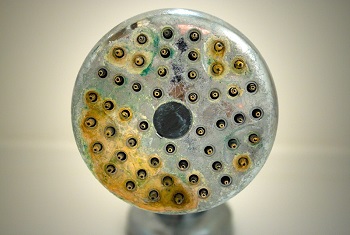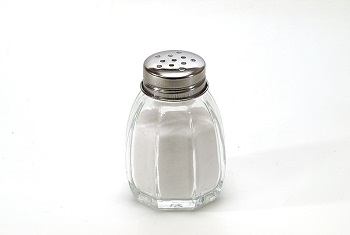You’re about to take a shower when you notice the sound of your water softener system regenerating. Can you take a shower now or should you wait until your water softener has finished regenerating?
Showering while a single tank electric water softener is regenerating may result in poor water pressure, hard water stains, dry skin, and stringy hair. An alternating dual-tank water softener will provide softened water when regenerating, but you may still have poor water pressure from your shower.
Because a water softener needs a strong flow of water to properly regenerate its water softener resin when it regenerates, taking a shower while it is regenerating can affect its performance and the quality of the water that you are showering in.
What happens if you shower while a water softener is regenerating?
When an electric water softener is regenerating, you can take a shower, but don’t expect the soft soapy lather that you are used to because you will be taking it in untreated water.
At the beginning of an electric water softener regeneration process, the water softener will bypass itself so any water that you use during this time will not be softened.

So if you have hard water or iron in your water, you can expect the water to feel hard during your shower and you may get hard water stains on your fixtures.
I found this water softening shower filter that works great as a backup filter for when you need to use the shower but is concerned because your water softener is regenerating.
Can you shower when a dual-tank water softener is regenerating?
If you have a dual tank water softener that alternates tanks when it regenerates, then you should not experience a change in your water other than a possible drop in pressure.
In order to properly answer this question, we really need to understand just what is happening during the regeneration process, and what your water will do if you choose to take a shower while your water softener is regenerating.
When traditional single tank water softeners start their regeneration process, the system will use water separately from the water going into the home.
The water that is bypassed from going through the system will be water straight from your water source. Hardness, iron, or any other issues that your water treatment system addresses will go untreated.
Check out this quick video about how a water softener uses water to regenerate.
So any water that you use when the softener is in its regeneration mode will be replaced with untreated, hard water along with iron if there is iron in your water as well.
In other words, by using hot water while a single tank water softener is regenerating, you will be using the hot water from your hot water heater tank which should be soft, and then your hot water heater tank will be re-filled with untreated, hard water.
An alternating dual-tank water softener will provide soft water for your shower even when it is regenerating, but you may still experience a drop in water pressure from your shower.
Why is it bad to have hard water in your hot water heater?
Hard water in a hot water heater will leave deposits of hardness on the coils inside the tank, making it less efficient and in time, it will not be able to heat up the water at all and need to be replaced or in some cases, it can be cleaned out using acid.
But this is not recommended as it causes wear on other parts of the tank as well. It is often recommended that using small amounts of water during a water softener’s regeneration cycle is perfectly ok (washing hands, flushing a toilet, getting a glass of water for drinking).
The small amount of hard water that will enter the house plumbing when these things are done, should not cause any harm to the plumbing or water fixtures.
But showering, washing clothing, or using a dishwasher with hot water will cause a substantial amount of hard water to be drawn into the hot water heater tank which may cause problems.
You could get salty water from the water softener.

Although not very common, using a strong flow of water like showering can cause saltwater that the water softener uses to remove the hardness from its resin, to be drawn out into the houses plumbing, often sitting in the lines till the next time the water is used, causing the water to be salty and unpleasant to drink.
Running the water for a few minutes will usually remove the salty water and the water will be back to normal.
Using water during a water softeners regeneration cycle can allow water that is supposed to go down the drain to go into the home.
Many common water softeners use an Autotrol control valve that has a series of flappers that control the water flow within the valve. As these flappers wear down over time, their ability to stay closed will weaken.
When you use any large volume of water (like taking a shower, a toilet flush, or a washing machine) while the unit is in its regeneration cycle the sheer drop in pressure in the house can cause these flappers to open slightly and allow the systems brine (saltwater) to seep into the home’s plumbing.
These Autotrol brand valves work very well and are generally very reliable.
Under normal conditions, the flapper valves do work as they are intended, and if you have an older Autotrol valve, the flappers can be replaced once they wear down at a reasonable cost, and should add many years to the systems life.
How can I get constant soft water while using water?
If you have a dual tank system that switches from one tank to the other when the regeneration cycle begins, there should be no interruption to your soft water supply.
When a dual tank system switches tanks, it puts the previously cleaned tank into service before starting the regeneration process, so you have continuous soft water.
But just because you have two tanks does not mean that they are switching from one to the other. Sometimes a system with two tanks has both of them in service at the same time for when a higher flow of water is desired.
These dual systems usually work just like a single tank system and you should avoid using water when they are regenerating if possible.
Your water softener may regenerate during your shower.
If you have a non-electric water softener, the biggest problem is you will not know when the system will go into its regeneration cycle.
And many people complain that the water pressure in the shower can drop considerably because of their non-electric system going into its regeneration while they are showering.
Because a non-electric water softener has no idea what time it is and will only regenerate when the usage of water triggers it into its regeneration process.

The homeowner will never know if their shower will be interrupted by a drop in water pressure due to the water softener.
Can you make a non-electric water softener regenerate at a preset time?
If the water pressure in your home is poor, there is a solution for this unpredictable regenerating of a non-electric water softener but it’s not cheap and there are reports of problems with it.
It is an electric timer device that can be attached to the system, in essence turning it into an electric water softener. With this timing device, the non-electric water softener can be programmed to regenerate at a pre-determined time, just like a traditional electric water softener.
The timer usually costs several hundred dollars and pretty much turns the non-electric water softener into an electric water softener that you could have got in the first place and probably for much less money.
So, taking a shower while your water softener is not usually a problem. If you find that your electric water softener is regenerating when you regularly take a shower, make sure the clock is set correctly, as it should be regenerating around 2 am when there is no water being used.
If you have a non-electric water softener, it will only regenerate when water is being used unless an electric timer is added to it.
So you may experience a loss of pressure when showering if your non-electric water softener kicks into regeneration during your shower.
With either an electric or non-electric water softener, taking a shower while it is regenerating may deprive the water softener of enough water pressure to properly perform the ion exchange process that it uses to regenerate its water softener resin.
Related Questions:
How can I change what time my water softener regenerates? Depending on which brand and model water softener that you have, programming the regeneration time could be simple or complicated.
My tip for changing what time your water softener regenerates is to simply set the clock to make the water softener regenerate when you want it to.
If you want the softener to regenerate 2 hours later, set the clock back 2 hours. If you want it to regenerate 4 hours earlier, set the clock ahead 4 hours, it’s that easy.
Can I bypass my water softener when I need to take a shower? You could bypass your water softener when you want to take a shower, but you will be showering in untreated, hard water.
If a little hard water doesn’t bother you, then fine, but if you have iron in your water, you may get iron staining in your shower by bypassing the system.


My dual tank Kenetico water softener is letting brine water during the regeneration cycle into the house supply water when I turn on water at the sink. Stinks to high heaven. After regeneration cycle is completed everything goes back to normal.
Hello Zane and thank you for the question.
If your Kinetico dual tank water softener is allowing the brine to get into your water during regeneration, the valves inside of the control are not sealing correctly. If you are very handy, you may be able to open the control and clean the valves to make the operate properly again, but I find that this does not last long. I would recommend that you contact your local dealer to have them rebuild the valve.
This may cost several hundred dollars depending on your local Kinetico dealer. If all you need is water softening, that money may be better off spent on a standard water softener that may cost you just a little more than the Kinetico re-build.
I hope this was helpful.
Paul